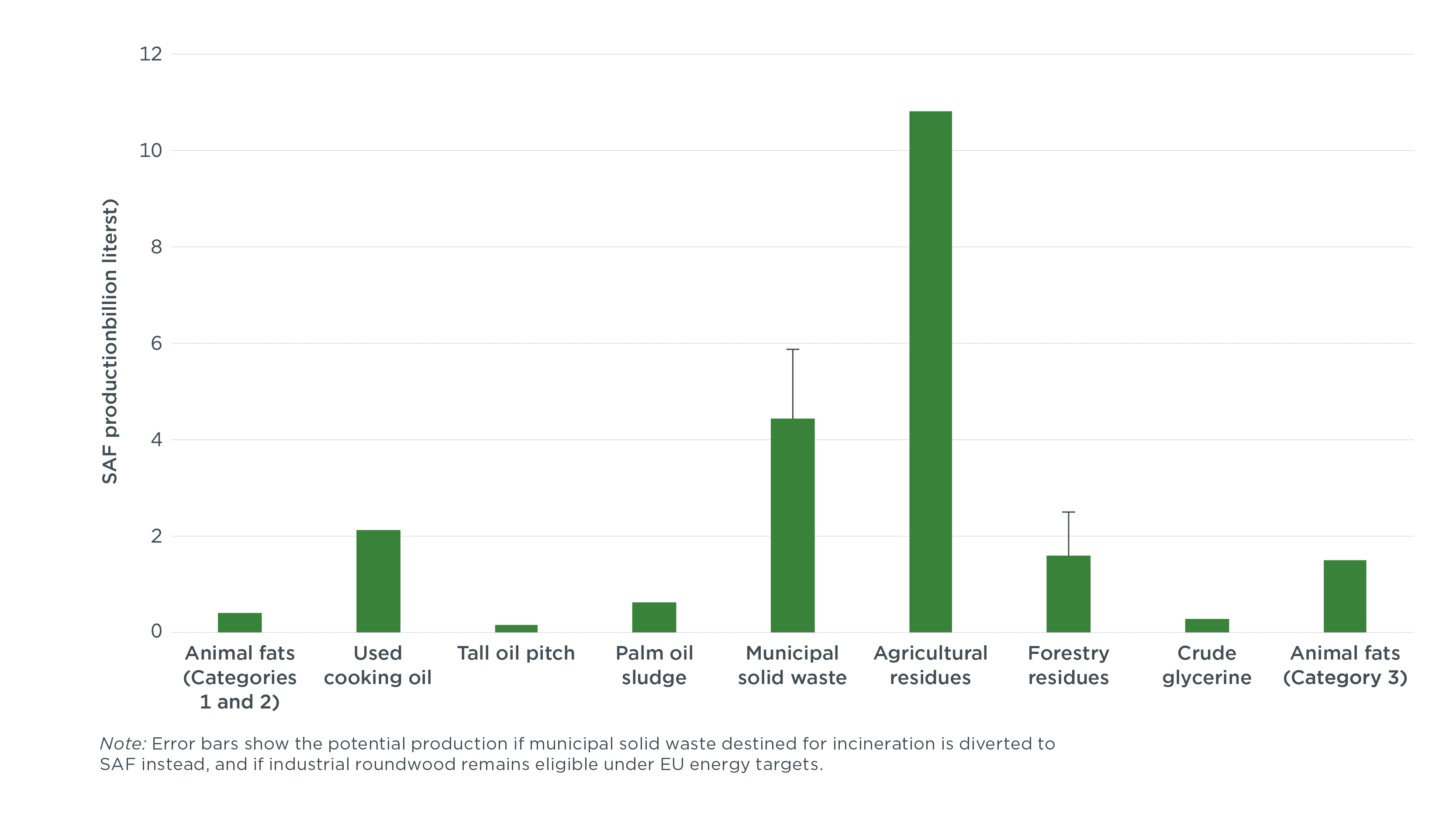Estimating sustainable aviation fuel feedstock availability to meet growing European Union demand
Research Brief
Availability of biomass feedstocks in the European Union to meet the 2035 ReFuelEU Aviation SAF target
Sustainable aviation fuels (SAFs) are fossil fuel replacements, some of which come from biological materials. Biomass-based SAF produced from waste and residue material will be crucial for achieving net-zero emissions in aviation due to their energy density and compatibility with existing aircraft: Previous research by the ICCT shows that SAF is likely to contribute the majority of future CO2 reductions within aviation.
In Europe, the ReFuelEU Aviation regulation was adopted in October 2023 under the EU Fit for 55 package. It mandates the use of SAF, specifying eligible feedstocks for meeting blending targets.
This briefing provides an update to our 2021 analysis of EU feedstock availability for SAF. We assess the availability of waste and residue biomass materials in the EU that meet ReFuelEU’s eligibility criteria, including a subset of those materials that could be sustainably supplied to the aviation sector to meet the 2035 SAF target. We define these as “lowest risk” of all the eligible biofuels.
Key updates include:
- A bottom-up assessment of domestic and imported waste oil availability.
- An updated assessment of lignocellulosic materials (e.g. agricultural and forestry residues) in the EU, with a sensitivity analysis of forestry residues and municipal solid waste availability.
- Supplemental data from literature and revised yield assumptions for distillate fuel via the hydrotreated esters and fatty acids (HEFA) pathway, based on recent techno-economic assessments.
We find that SAF blending targets up to 2035 can be met using available low-greenhouse gas (GHG) biomass—such as agricultural residues and municipal solid waste—without turning to higher-risk feedstocks that are prone to labeling fraud or could impact global markets for food and animal feed, for example. However, meeting later year targets of up to 35% bio-SAF will be more challenging. Given the ample supply of low-GHG lignocellulosic feedstocks, it is crucial to broaden investment beyond the near-term HEFA projects for processing waste fats and oils. Building facilities to produce SAF from lignocellulosic materials would ensure that the supply of SAF is sufficient to meet longer-term blending targets.
Figure. Maximum SAF production from eligible ReFuelEU feedstocks in 2035

Note: This paper was updated on 13 February 2025 to correct the SAF production volumes for agricultural and forestry resides in Table 2. As a result, the estimated total SAF volume dropped from 18.1 Mt in 2035 to 17.3 Mt. On 14 November 2025, this paper was updated to correct the lower bound availability for MSW used in our sensitivity analysis. Figures 1 and 2 have been updated accordingly.
